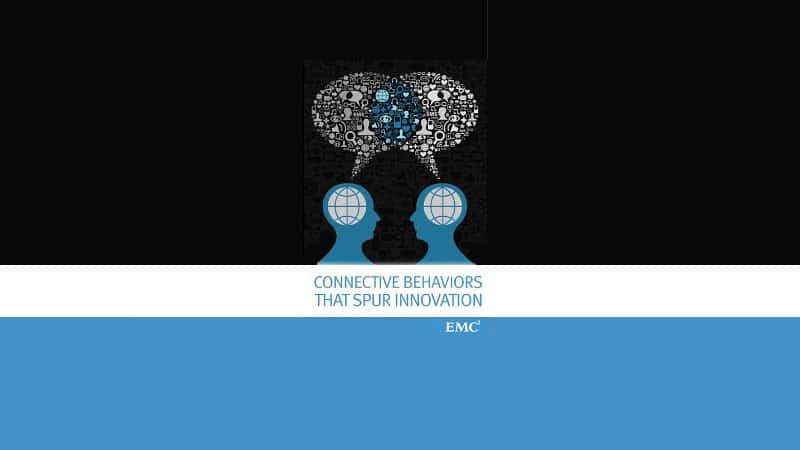
Pam Fox Rollin wrote this chapter for the ebook Connective Behaviors That Spur Innovation published by EMC West Coast Women’s Leadership Forum.

What’s more likely to happen because you’re in the room?
- Does your calm relax anxious team members?
- Do your questions invite deeper thinking?
- Does your courage embolden perceptive dissent?
- Does your generosity feed a cycle of helpfulness?
- Does your persistence lead to results that can actually be implemented?
What comes in the room when you walk in?
Good data, clarity, rigor, zaniness, empathy?
Un-examined assumptions, anxiety, blame?
Leadership is a performance art. You show up. You do something, if only breathing. Others experience the room differently because you’re here. Their ideas, thoughts, actions become possible because, in part, you’re in the room.
Because A showed up with B, X could do Y.
Because Tony Hsieh cultivated community with coworkers, most Zappos employees followed him to the desert to build their new world from the ground up. Because Tony loves to learn, front-line team members dare to believe that they are Zappos’ future experts and leaders, strengthening their motivation to learn.
Because Susan Desmond-Hellmann, Chancellor of UCSF and former president of product development at Genentech, shows up with palpable confidence in her people to rise to their best, they do.
Because Herb Kelleher showed up ready to laugh, his Southwest employees felt safe making flying fun for passengers, inviting emotional connection to the brand. (You’d think that would be easy for competitors to copy, right? Just hire for a good sense of humor and say it’s OK to use it. Yet no other airline makes me chuckle. I suspect some flight attendants on American have lovely senses of humor, but they sure don’t feel encouraged to bring it to work.)
Personal influence isn’t reserved for the famous. Jeff Bezos didn’t become CEO of a successful company and only then show up with passion for pulling insight from data.
Because Lina Echeverría, former engineering lead at Corning, relishes creative conflict, scientists from different disciplines debated and created and debated some more. The result: they transformed market after market with better technology.
17 years ago, a Chief Marketing Officer of a health plan popped his head into a meeting and asked me to come with him. In thanking the others for excusing me, he explained, “I just think better when Pam’s in the room, and I need to do some good thinking right now.” With that, he snapped my contribution into focus, and a few years later I switched from analyzing corporate strategy to coaching executives and teams.
Because you show up fully, what are others more likely to do?
My go-to definition of leadership is the simplest I’ve heard: “getting forward motion” – attributed to Clark Kerr, former University of California President. I love this definition both for what it says (a leader is someone who gets motion in some direction he or she imagines to be forward) and what it doesn’t say (is the leader forging the path the front or herding from the rear? How does a leader invite motion?).
Innovation and leadership meet at this point: both create forward motion.
How does your presence accelerate motion and nudge it in the direction you call Forward?
Beyond personal qualities, you show up with your life experience. Sometimes, like Sheila Marcelo of Care.com, you innovate when you need what you can’t find.
There’s a piece of research that jolted me: the more broadly known a piece of data, the more likely it is to be shared in a team conversation. In other words, we sit on our own stuff. Diversity rings hollow if you don’t talk about what you and only you know.
So, what do you know? And how will you summon the courage to bring it?
Because Nilofer Merchant, strategic innovation instigator, shows up as an open book (she’s blogged on HBR about mistakes she’s made and rough experiences others might share only with close friends), people enter the room knowing Nilofer is ready for them to be candid about who they are, what they suck at, and what they are on fire to create.
When you make peace with your weaknesses and foibles, you take away their power to flummox you. You don’t waste energy trying to pretend you’re perfect. You just show up.
OK, you say, I’m here in the room. How do I show up in ways that are useful… that accelerate forward motion?
- Clue in to what you bring – Ask your colleagues to consider what’s different in a room because you’re there and what they see as the impact of those qualities and experiences. Invite them to coffee with the topic: What’s more likely to happen when I’m in the room? Consider whether you might cultivate a quality in yourself that you now bring inconsistently.
- Show up as fully as you can – Make the courageous stand to sleep well on a regular basis. Do yoga, meditate, play guitar, run, spend time in nature… whatever helps you connect to yourself at your most calm and open. When it’s time to meet, make advance arrangements so you can set aside distractions and actually be present.
- Choose to walk into some new rooms. – Observe what others bring and how that impacts you and others.Connect with people who value what you bring.
Pam Fox Rollin wrote this chapter for the ebook Connective Behaviors That Spur Innovation published by EMC West Coast Women’s Leadership Forum.
WHAT WOULD IT MEAN TO YOU TO…
Expand your capacity to take on bigger opportunities?
Lead your organization to bring out the best around you?
Be your most influential, productive self in your work?
Guide your organization to success after success?
IdeaShape helps you start smart, shape the future, and make differences productive. We specialize in coaching executives, strengthening senior team communication, and facilitating strategy, team-building, and innovation sessions. We bring distinctive capabilities to all our services:
- Intensive focus on helping highly-capable people achieve more, with greater fulfillment.
- Extensive business experience, including coaching and consulting with leading corporations and entrepreneurial organizations.
- Foundation in leadership, coaching, and organizational theory and practice.
- Expert interpretation and innovative use of Myers-Briggs Type Indicator® and other personality theories and assessments.
- Support for making the most of everything you are — unique gifts, deepest values, highest aims — to accomplish your goals.
We invite you to contact us to explore working together.
TO CONTACT US:
To offer feedback, submit ideas for articles or resources, or for more information on Executive Coaching, Team and Talent Development, and Onboarding services, please email us at info@ideashape.com
KNOW ANYONE WHO MAY ENJOY THIS? Click below to SHARE it! And to make sure you don’t miss out on our current monthly newsletters, click here to sign up.




What People Are Saying
Hi Pam. This is a very thought-provoking and insightful post. Keep up the great work! Chris
Great article, Pam. It seems pretty risky, though, especially as an employee, to do what you cite Nilofer Merchant does: show up warts and all. I know your blog is geared toward leaders, but there are some ways even leaders show up (female thinking types for instance who get branded as being hard–witness what people are saying about Margaret Thatcher now since she recently passed) that are demonized in the world. Another person currently being vilified is the actress Anne Hathaway, for being “too nice.” When you decide to lead, I guess you simply have to tune all this noise out. ?
We use cookies to give you the best possible experience on our website. Learn more.